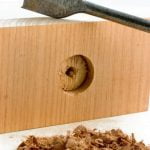Are you wondering, “can I use home improvement as a tax deduction?” Understanding the concept of home improvement tax deductions is crucial for homeowners looking to maximize their potential tax savings.
By making certain types of improvements to your home, you may be eligible to claim these expenses as deductions on your taxes, resulting in potential financial benefits. In this article, we will explore the qualifications for home improvements that can be considered for tax deductions, the necessary documentation requirements, IRS guidelines and regulations, potential savings, common misconceptions, how to properly claim these deductions when filing taxes, and the importance of consulting with a tax professional for guidance.
Home improvement tax deductions hold significant importance as they provide homeowners with an opportunity to not only enhance their living space but also potentially reduce their tax liabilities. Whether it’s for energy-efficient upgrades, accessibility modifications, or repairs related to health and safety concerns, understanding which home improvements qualify for tax deductions is essential.
In addition to discussing the types of home improvements that may qualify for tax deductions, we will also delve into the specific documentation requirements needed to substantiate these expenses when filing taxes. From receipts and invoices to contractor information, having proper documentation is crucial for successfully claiming these deductions. Understanding IRS guidelines and regulations is equally important in ensuring compliance with any limitations or restrictions set forth by the IRS.
What Home Improvements Qualify
When considering whether home improvements qualify for tax deductions, it’s essential to understand the types of upgrades that may be eligible. The IRS provides guidelines on what qualifies as deductible home improvements, and it’s important for homeowners to familiarize themselves with these criteria. Here are some examples of home improvements that may qualify for tax deductions:
- Energy-Efficient Upgrades: Installing energy-efficient windows, doors, insulation, roofing, HVAC systems, or solar panels can potentially qualify for tax deductions. These upgrades not only benefit the environment but also provide financial incentives for homeowners.
- Accessibility Modifications: Making modifications to a home to accommodate individuals with disabilities or special needs can also be considered as deductible home improvements. This includes adding ramps, widening doorways, installing handrails, or making other adjustments to improve accessibility.
- Repairs Related to Health and Safety: Certain repairs or renovations that are necessary for health and safety reasons may qualify for tax deductions. For example, removing lead-based paint or asbestos, fixing structural issues, or addressing mold and mildew problems can potentially be deducted.
It’s important to note that not all home improvements will automatically qualify for tax deductions. The key factor is whether the improvement directly contributes to the property’s value or prolongs its useful life. Additionally, any expenses related to routine maintenance or cosmetic enhancements typically do not qualify for tax deductions.
In order to determine whether a specific home improvement project is eligible for tax deductions, homeowners should consult the IRS guidelines and consider seeking advice from a qualified tax professional. Taking the time to understand which types of improvements are eligible can help maximize potential savings when filing taxes.
Ultimately, by investing in qualifying home improvements and understanding the potential tax benefits they can provide in the long run can lead to significant savings for homeowners. It’s crucial to assess each project carefully and keep detailed records of all expenses incurred in order to support any potential claims for tax deductions related to home improvements.
Documentation Requirements
When considering using home improvement as a tax deduction, it is crucial for homeowners to understand the documentation requirements set forth by the IRS. In order to claim home improvement expenses as tax deductions, individuals must be able to provide detailed proof of the expenditures incurred during the renovation or upgrade process. This includes keeping thorough records of receipts, invoices, and contractor information associated with the home improvements.
Receipts and Invoices
One of the most important pieces of documentation required for claiming home improvement expenses as tax deductions is keeping all receipts and invoices related to the renovation or upgrade. These documents serve as evidence of the costs incurred and should include details such as dates, itemized expenses, and any warranty information.
Contractor Information
In addition to receipts and invoices, homeowners must also maintain detailed records of any contractors or professional services utilized for the home improvements. This includes obtaining and retaining copies of contracts, agreements, and contact information for all hired professionals. Having this information readily available can help substantiate the legitimacy of the expenses claimed when filing taxes.
It’s important to note that failure to provide sufficient documentation to support home improvement deductions when requested by the IRS can result in claim denial or potential penalties. Therefore, homeowners should make it a priority to organize and maintain accurate records of all relevant paperwork associated with their home improvement projects. Can I use home improvement as a tax deduction? Keeping thorough documentation is key to successfully claiming these expenses on your tax return.
IRS Guidelines
Under IRS guidelines, homeowners can potentially benefit from claiming home improvement expenses as tax deductions, but it is essential to understand the specific regulations and limitations set forth by the IRS. The IRS allows for certain types of home improvements to be eligible for tax deductions, but there are strict criteria that must be met in order to qualify for these benefits.
One important guideline to consider is that not all home improvements will qualify for tax deductions. Generally, home improvements that increase the value of the property or are considered personal expenses are not eligible.
However, certain types of improvements such as energy-efficient upgrades, accessibility modifications for elderly or disabled individuals, and repairs related to health and safety may qualify. It’s crucial for homeowners to carefully review the IRS guidelines to determine if their specific home improvement projects can potentially be claimed as tax deductions.
Additionally, the IRS requires homeowners to maintain proper documentation and proof of their home improvement expenses in order to claim them as tax deductions. This includes keeping receipts, invoices, and detailed records of any work done by contractors. Without sufficient documentation, individuals may not be able to substantiate their claims and could face challenges during an audit by the IRS.
Furthermore, there are limitations and restrictions on the amount of home improvement expenses that can be claimed as tax deductions. The IRS has clear guidelines on the maximum allowable deduction for various types of home improvements, so it’s important for homeowners to be aware of these limits when preparing their tax returns.
| IRS Guidelines | Tax Deduction |
|---|---|
| Certain types of home improvements may qualify | Eligibility criteria must be met |
| Maintain proper documentation and proof | Receipts, invoices, contractor information required |
| Limitations and restrictions on deductible amounts | Clear guidelines on maximum allowable deduction |
Potential Savings
When it comes to home improvement, many homeowners often focus on the immediate benefits of a more functional and aesthetically pleasing living space. However, what some may not realize is that certain home improvements can also lead to potential savings in the form of tax deductions. Understanding how home improvements can be used as a tax deduction can help homeowners make informed decisions about their renovation projects and maximize their financial benefits.
Types of Home Improvements That Qualify
Not all home improvements are eligible for tax deductions. Generally, improvements that increase the value of the property or contribute to its general upkeep do not qualify for tax deductions.
Instead, certain types of upgrades that promote energy efficiency, enhance accessibility for individuals with disabilities, or address health and safety concerns
Potential Savings Through Tax Deductions
By utilizing home improvement expenses as tax deductions, homeowners have the potential to reduce their overall tax burden, leading to significant savings over time. For example, if a homeowner invests in energy-efficient upgrades that qualify for tax deductions, they may be able to recover a portion of their expenses through reduced taxes. This can result in lower annual tax payments and long-term cost savings on utilities due to improved energy efficiency.
Real-Life Examples
To illustrate the potential financial benefits of using home improvement as a tax deduction, consider the case of a homeowner who invested in solar panel installation. The cost of purchasing and installing solar panels qualified for a federal tax credit, resulting in substantial savings on their annual taxes.
In addition to these direct savings, the homeowner also experienced lower electricity bills thanks to the energy generated by the solar panels. This real-life example demonstrates how leveraging home improvement expenses for tax deductions
Common Misconceptions
Many homeowners often wonder, “Can I use home improvement as a tax deduction?” There are numerous misconceptions surrounding the eligibility and criteria for claiming home improvement expenses as tax deductions. It’s essential to address these misconceptions and provide clarity on the eligibility criteria to ensure that homeowners can make informed decisions when it comes to maximizing their potential tax savings.
One common misconception is that any home improvement expense can be claimed as a tax deduction. However, the reality is that not all home improvements qualify for tax deductions. The Internal Revenue Service (IRS) has specific guidelines regarding the types of home improvements that may be eligible for deductions. This leads to the next misconception, which is assuming that all types of upgrades and renovations will result in tax savings.
To provide clarity on the eligibility criteria, it’s important to understand that certain types of home improvements may qualify for tax deductions. These include energy-efficient upgrades, such as solar panels or high-efficiency HVAC systems, accessibility modifications for individuals with disabilities, and repairs related to health and safety, such as mold remediation or lead paint removal.
Furthermore, another misconception is related to the amount of the deduction itself. Some homeowners may assume that they can deduct the full amount spent on home improvements from their taxes. However, the IRS has limitations and restrictions in place regarding the maximum deductible amount for certain types of home improvement expenses. Truly understanding these nuances can help homeowners maximize their potential tax savings while also staying within compliance with IRS regulations.
- Not every expense counts
- Specific guidelines apply
- There are limitations on deductible amounts
How to Claim
Homeowners who have made eligible home improvements throughout the tax year may be wondering, “Can I use home improvement as a tax deduction?” The answer is yes, but it’s essential to understand the proper steps for claiming these expenses on your tax return. Here is a step-by-step guide to help homeowners properly claim their home improvement expenses as tax deductions when filing taxes.
First and foremost, it is crucial to keep accurate records of all home improvement expenses. This includes retaining receipts, invoices, and any other related documentation that provides proof of the costs incurred. It’s also important to gather information about the contractors or professionals who performed the work, as their details may be required when claiming the deduction.
When filing taxes, homeowners can usually claim home improvement expenses under Schedule A (Form 1040) as itemized deductions. However, there are specific forms that may need to be filled out depending on the type of improvement made. For example, energy-efficient upgrades often require Form 5695 (Residential Energy Credits), while medical-related modifications may involve Form 8826 (Disabled Access Credit).
It’s important to note that there are limitations and regulations set forth by the IRS regarding home improvement tax deductions. For instance, not all home improvements will qualify for a deduction, and there may be caps on certain types of expenses. Consulting with a qualified tax professional or accountant can provide homeowners with personalized guidance tailored to their specific situation and maximize their potential tax savings through home improvement deductions.
| IRS Forms | Related Improvement Type |
|---|---|
| Form 5695 | Energy-Efficient Upgrades |
| Form 8826 | Medical-Related Modifications |
Consultation With a Tax Professional
In conclusion, it’s important for homeowners to understand the potential benefits of utilizing home improvement as a tax deduction. The cost of home improvements can add up quickly, but being able to claim these expenses on your taxes can lead to significant savings. However, it’s crucial to ensure that you are following the necessary guidelines and regulations set forth by the IRS in order to avoid any issues with your tax filings.
When considering whether certain home improvements qualify for tax deductions, it’s important to research and understand the specific types of upgrades that may be eligible. For example, energy-efficient upgrades, accessibility modifications, and repairs related to health and safety are often considered qualifying expenses. Keeping thorough documentation of these expenses is essential, including receipts, invoices, and contractor information.
While understanding the potential savings that can be achieved through claiming home improvement as a tax deduction is valuable, seeking guidance from a qualified tax professional or accountant is highly recommended. They can provide expert advice on IRS guidelines, eligibility criteria, necessary documentation requirements, and how to properly claim home improvement expenses when filing taxes.
By consulting with a professional, homeowners can ensure accuracy and maximize their potential tax savings through home improvement deductions. So if you need answers like “can I use home improvement as a tax deduction” you will have the correct answer talking with one.
Frequently Asked Questions
Can You Deduct Home Improvements on Your Taxes?
You typically cannot deduct home improvements on your taxes. However, certain home improvements that improve energy efficiency, such as installing solar panels or energy-efficient windows, may be eligible for tax credits.
Can I Deduct New Flooring on My Taxes?
Whether you can deduct new flooring on your taxes depends on the purpose of the flooring. If it is for a home office used exclusively for business purposes, it may be eligible for a deduction. Otherwise, it is unlikely to be deductible.
How Do I Prove Home Improvements Without Receipts?
If you do not have receipts for your home improvements, there are still ways to prove them for tax purposes. You can use bank statements, credit card statements, and any other documentation showing the cost of materials and labor used for the improvements. It’s important to keep thorough records in case of an audit.

I’m thrilled to have you here as a part of the Remodeling Top community. This is where my journey as an architect and remodeling enthusiast intersects with your passion for transforming houses into dream homes.





